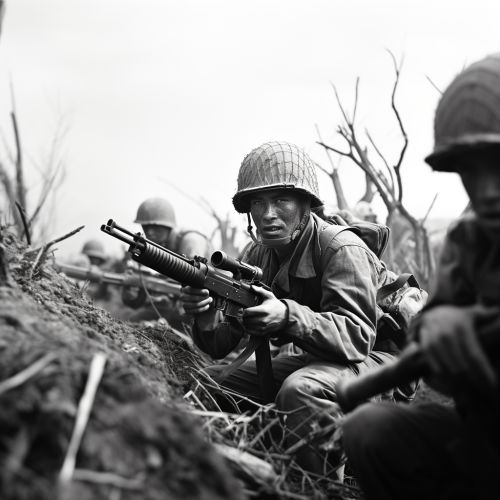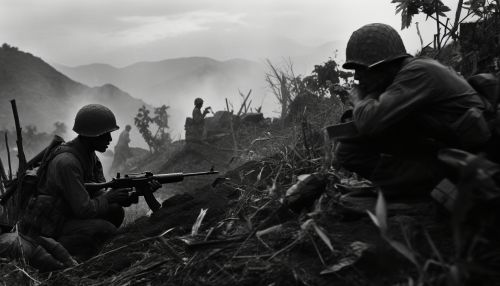Korean War
Background
The Korean War was a military conflict that took place on the Korean Peninsula from June 25, 1950, to July 27, 1953. This war was a result of the physical division of Korea by an agreement of the victorious Allies at the conclusion of the Pacific War at the end of World War II. The Korean Peninsula was ruled by the Empire of Japan from 1910 until the end of World War II. Following the surrender of the Empire of Japan in September 1945, American administrators divided the peninsula along the 38th parallel, with United States forces occupying the southern part and Soviet forces occupying the northern part.


Causes of the War
The causes of the Korean War can be traced back to the end of World War II when the Korean Peninsula was liberated from Japanese rule. The division of Korea into two zones by the United States and the Soviet Union, and the subsequent failure to hold free elections throughout the peninsula in 1948 deepened the division between the two sides; the North established a communist government, while the South established a right-wing government. The 38th parallel increasingly became a political border between the two Korean states. Although reunification negotiations continued in the months preceding the war, tension intensified. Cross-border skirmishes and raids at the 38th Parallel persisted. The situation escalated into open warfare when North Korean forces invaded South Korea on 25 June 1950.
Course of the War
The war began on June 25, 1950, when the North Korean People's Army crossed the 38th parallel and invaded South Korea, capturing Seoul, the capital, within a few days. The United Nations Security Council condemned the North Korean action and created the United Nations Command, to which 16 member nations sent troops and assistance. The United States, which had significant forces in Japan following World War II, led the troops. The North Koreans were initially successful, but the tide turned in favor of the United Nations forces in September 1950 following the Inchon Landing, a daring amphibious assault at the port city of Inchon.
The UN forces rapidly advanced into North Korea with the objective of rolling back North Korea to its pre-war boundaries. However, as they neared the Chinese border, the People's Republic of China intervened in the war, launching a counter-offensive that pushed the UN forces back into South Korea. The war became a bloody stalemate, with the front line close to the 38th parallel, where it had begun.
Armistice and Aftermath
After two years of negotiations, an armistice was signed on July 27, 1953, at Panmunjom, on the 38th parallel. The war had cost the lives of millions and left the Korean Peninsula divided. The armistice created the Korean Demilitarized Zone to separate North and South Korea, and allowed the return of prisoners. However, no peace treaty was ever signed, and the two Koreas are technically still at war, engaged in a frozen conflict.
Impact and Legacy
The Korean War had profound implications on the international stage. It was the first significant armed conflict of the Cold War and set a precedent for many later conflicts. It was a proxy war, with the Soviet Union and China supporting North Korea, and the United States and its allies supporting South Korea. The war demonstrated the extent of US commitment to the policy of containment, resisting the spread of communism worldwide.
On the Korean Peninsula, the war brought widespread devastation and loss of life. It also solidified the division between North and South Korea, leading to a prolonged period of tension and hostility that continues to this day. The war also had significant cultural and social impacts, shaping the identities and histories of both Koreas.
